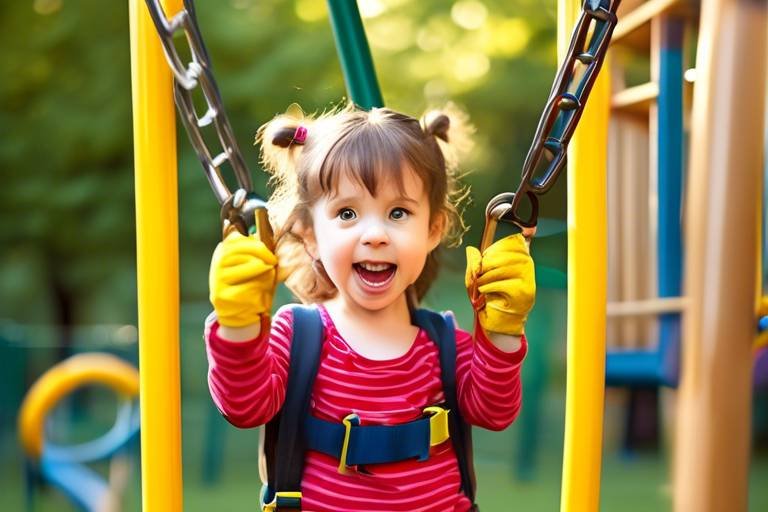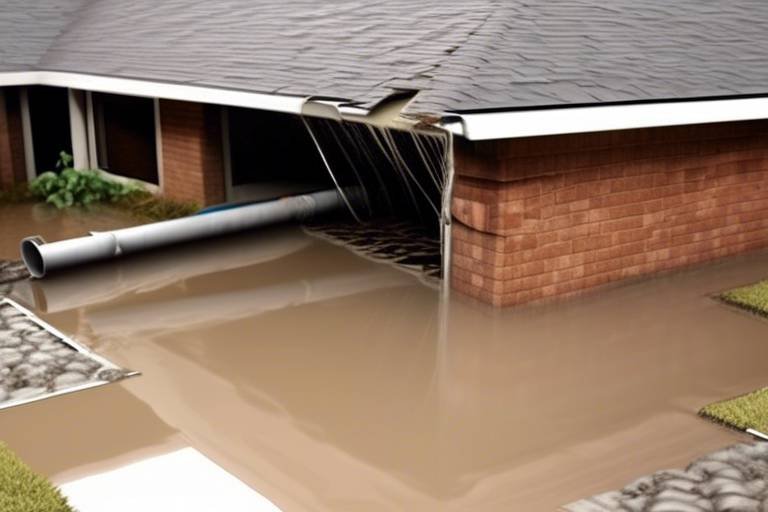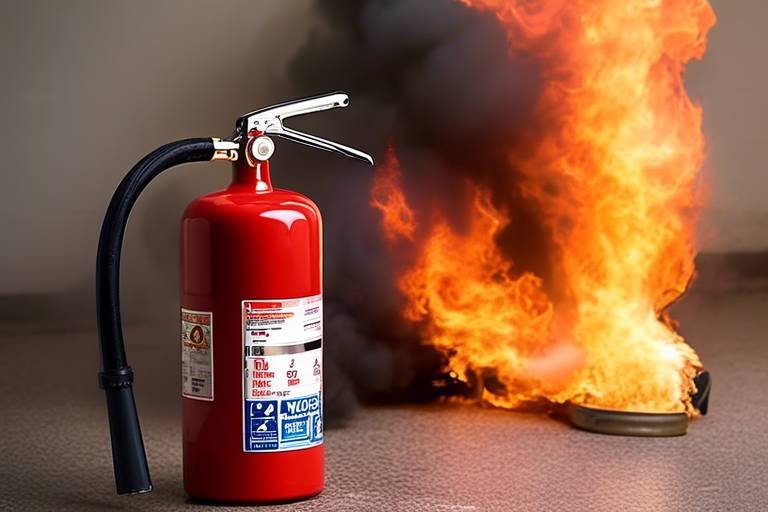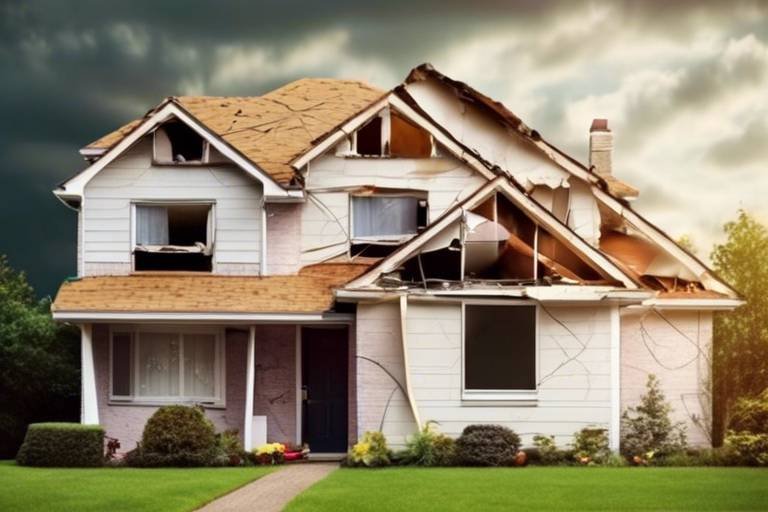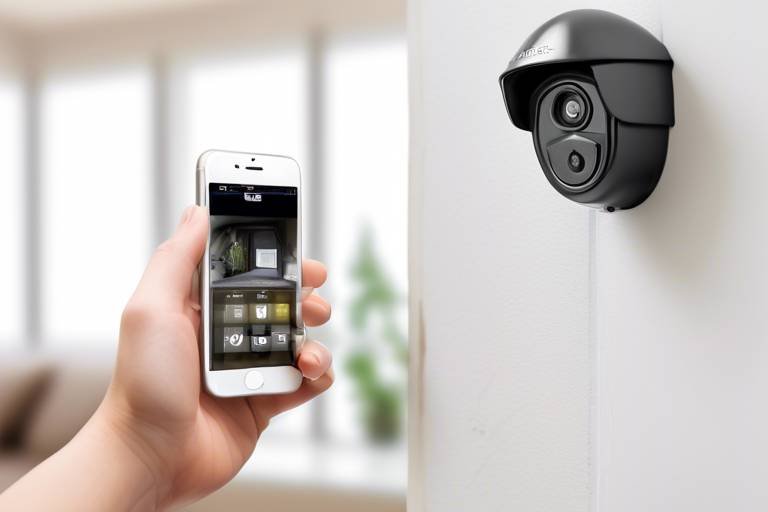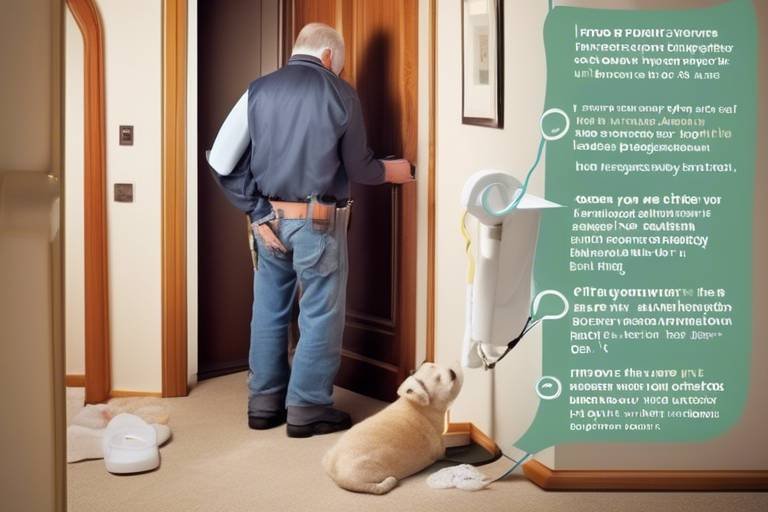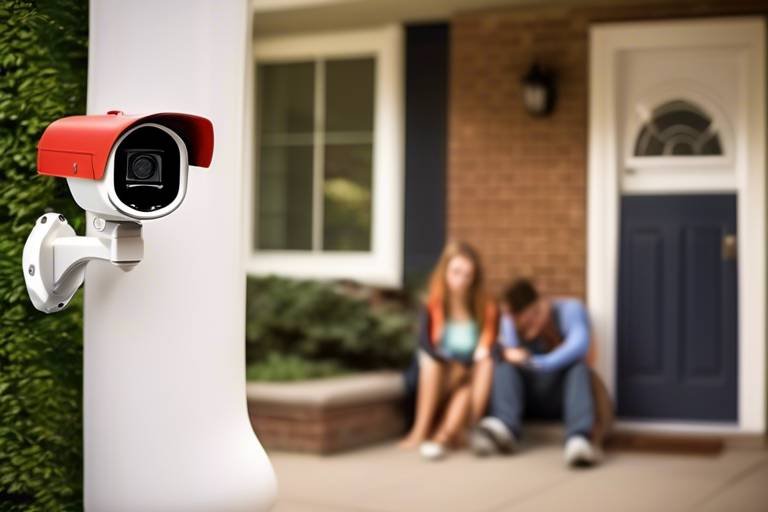Outdoor Play Equipment Safety and Inspection
When it comes to our children's safety, there's no room for compromise, especially in outdoor play environments. The thrill of climbing, swinging, and sliding is an integral part of childhood, but it comes with its own set of risks. That’s why understanding outdoor play equipment safety and the importance of regular inspections is crucial. Not only does it ensure that children can enjoy their playtime without fear of injury, but it also gives parents and caregivers peace of mind knowing that they are taking the necessary steps to keep their little ones safe. In this article, we will delve into the importance of regular inspections, identify common safety hazards, and discuss best practices for maintenance to create a secure play environment.
Imagine a playground filled with laughter, joy, and the sound of children playing freely. Now, picture that same playground with broken swings or a slide that has become hazardous due to wear and tear. Regular inspections are like a safety net, catching potential problems before they lead to accidents. These inspections are essential for maintaining the safety and integrity of outdoor play equipment. They help in identifying issues such as loose bolts, damaged surfaces, or even unsafe heights that could pose risks to children. By establishing a routine for these checks, caregivers and facility managers can effectively prevent accidents and ensure a safe play environment.
Outdoor play equipment can be a treasure trove of fun, but it can also harbor hidden dangers. Identifying common safety hazards is the first step in preventing injuries. Some of the most prevalent risks associated with play structures include:
- Wear and Tear: Over time, equipment can suffer from deterioration, making it unsafe for use.
- Rust and Corrosion: Metal structures can become compromised, leading to potential collapses.
- Wood Rot and Splinters: Wooden equipment can develop rot or splinters, posing risks of cuts and injuries.
By being vigilant and addressing these hazards proactively, we can create a safer environment for our children to explore and enjoy.
Wear and tear is an inevitable part of outdoor play equipment, but recognizing its signs can make all the difference. Equipment that has been subjected to the elements or heavy use may show visible signs of deterioration, such as cracks, loose parts, or fading colors. Regular inspections allow for timely repairs and replacements, ensuring that the equipment remains safe and functional. Think of it as giving your playground a health check-up; just like you would for your car or your own body, regular attention can prevent bigger issues down the line.
Rust and corrosion are common culprits when it comes to metal play equipment. Over time, exposure to moisture can lead to rust, which compromises the structural integrity of swings, slides, and climbing frames. Regular maintenance, such as applying protective coatings and ensuring proper drainage, can help mitigate these issues. If rust is already present, it’s crucial to address it immediately to prevent further damage. Remember, a little prevention goes a long way in maintaining safety!
Wooden playground equipment can be a charming addition to any park, but it requires special attention. Over time, wood can rot due to moisture exposure, leading to safety hazards. Additionally, splintering wood can cause painful injuries to unsuspecting children. Regularly inspecting wooden structures for signs of rot and splinters is essential. If you notice any issues, it may be time to sand down rough areas or even replace compromised parts to ensure safe play.
Adhering to safety standards and regulations is not just a good practice; it’s a necessity for outdoor play equipment. Organizations such as the Consumer Product Safety Commission (CPSC) provide guidelines that help ensure safe play environments for children. These guidelines cover everything from equipment height to proper surfacing materials. By familiarizing yourself with these standards, you can make informed decisions about the equipment you choose and how you maintain it.
Implementing maintenance best practices can significantly prolong the life of outdoor play equipment. Regular upkeep not only enhances safety but also ensures that children can enjoy their playtime without interruptions. Here are some tips:
- Routine Cleaning Procedures: Regularly cleaning play equipment helps prevent the buildup of dirt and debris that can pose hazards. Dirt can hide sharp edges or other dangers, so keeping surfaces clean is essential.
- Inspection Checklists: Using a detailed inspection checklist simplifies the evaluation process. It ensures that no potential issues are overlooked during inspections.
By committing to these best practices, we can create a safer and more enjoyable play environment for our children.
1. How often should outdoor play equipment be inspected?
It is recommended to conduct inspections at least once a month, with additional checks after severe weather events.
2. What should I do if I find a safety hazard?
If you discover a safety hazard, it’s crucial to immediately remove the equipment from use and address the issue before allowing children to play on it again.
3. Are there specific safety standards I should follow?
Yes, refer to guidelines from organizations like the CPSC for comprehensive safety standards regarding outdoor play equipment.
4. Can I perform inspections myself?
Absolutely! With the right checklist and knowledge, caregivers can perform inspections. However, it’s also wise to have a professional evaluation periodically.

Importance of Regular Inspections
When it comes to outdoor play equipment, the phrase “better safe than sorry” couldn’t ring truer. Regular inspections are not just a good idea; they are essential for maintaining a safe environment where children can explore, learn, and play without unnecessary risks. Imagine a playground as a bustling city where kids are the citizens; just like any city, it needs regular checks to ensure everything is functioning properly. Without these inspections, hidden dangers can lurk, waiting for the unsuspecting child to stumble upon them.
Think about it: how often do we overlook the little things in our daily lives? A squeaky swing, a wobbly slide, or a loose bolt might seem minor, but these small issues can lead to significant accidents. Regular inspections help identify these potential hazards before they become a problem. In fact, studies show that facilities with routine maintenance and safety checks experience significantly fewer injuries compared to those that neglect this important task. This proactive approach not only protects children but also provides peace of mind for caregivers and facility managers alike.
Additionally, regular inspections can help maintain the longevity of the equipment. Just like a car needs oil changes and check-ups, outdoor play structures require attention to keep them in top shape. By spotting wear and tear early, you can avoid costly repairs or replacements down the line. This is not just about safety; it's also about smart financial management. After all, investing a little time in inspections can save a lot of money and heartache later.
Let’s break down some key reasons why regular inspections are a must:
- Preventing Injuries: The primary goal of inspections is to identify and rectify hazards that could lead to accidents.
- Ensuring Compliance: Many local and national regulations require regular safety checks to comply with safety standards.
- Building Trust: Parents and guardians are more likely to let their children play in areas they know are well-maintained and regularly inspected.
In conclusion, the importance of regular inspections cannot be overstated. They are a critical component of ensuring a safe and enjoyable play environment for children. By making inspections a priority, we not only protect our children but also foster a culture of safety and responsibility in our communities. So, the next time you see a playground, take a moment to think about its upkeep. Is it being inspected regularly? If not, it might be time to advocate for a change!

Common Safety Hazards
When it comes to outdoor play equipment, safety should always be the top priority. Unfortunately, many caregivers and facility managers overlook common safety hazards that can turn a fun-filled day into a trip to the emergency room. Understanding these hazards is crucial for keeping children safe while they explore, climb, and play. From sharp edges to unstable structures, the risks are as varied as the playgrounds themselves. So, what exactly should you be on the lookout for? Let’s dive deeper into the world of outdoor play equipment safety!
One of the most significant hazards in playgrounds is the presence of sharp edges and protrusions. Children are often full of energy, running around and playing without a care in the world. However, if they come into contact with sharp edges, it can lead to serious injuries. Regularly inspecting equipment for any jagged edges or protruding bolts is essential. If you spot any, they should be smoothed out or covered immediately to prevent accidents.
Another common issue is unstable equipment. Swings, seesaws, and climbing structures should be securely anchored to the ground. If they wobble or shake during use, it can lead to falls and injuries. A simple shake test during inspections can help you determine if the equipment is stable enough for safe play. Remember, if it doesn’t feel right, it probably isn’t!
In addition to these hazards, surface materials play a crucial role in safety. Many playgrounds use mulch, sand, or rubber mats to cushion falls. However, if these materials become compacted or displaced over time, they lose their effectiveness. Regularly checking the depth and condition of these surfaces can significantly reduce the risk of injury from falls. For example, a well-maintained rubber mat can absorb the impact of a fall much better than hard ground.
Moreover, entrapment hazards are something that often goes unnoticed. Spaces between equipment, such as those found in climbing structures or slides, can pose a risk if a child gets stuck. These gaps should be examined closely to ensure they meet safety guidelines. If there are areas where a child’s head or body could become trapped, adjustments or modifications may be necessary to eliminate the risk.
Lastly, let’s not forget about the importance of weather-related hazards. Rain, snow, and extreme heat can affect the safety and usability of outdoor play equipment. Wet surfaces can become slippery, while extreme heat can cause equipment to become dangerously hot to the touch. Regular monitoring of weather conditions and equipment status is essential, especially after heavy rains or storms. Always encourage caregivers to check the equipment before letting children play, ensuring it's safe and ready for use.
In summary, being aware of these common safety hazards is vital for anyone responsible for outdoor play equipment. Regular inspections, coupled with proactive maintenance, can go a long way in preventing accidents and ensuring a safe play environment for children. Remember, a safe playground is a happy playground!

Wear and Tear Issues
When it comes to outdoor play equipment, worn-out components can turn a fun-filled day into a trip to the emergency room. Imagine a swing set that squeaks ominously every time a child swings back and forth—this is a classic sign of wear and tear. Regular inspections are essential for identifying these issues before they escalate into serious safety hazards. Children are naturally curious and energetic, and they often push equipment to its limits. As a result, it’s crucial to keep a close eye on the condition of play structures.
One of the most common signs of wear and tear is loose hardware. Bolts, screws, and nuts can loosen over time due to constant use. If you notice any parts that seem to wiggle or shift when pressure is applied, it’s time to tighten or replace them. This simple action can prevent a lot of potential accidents. Additionally, cracked or broken components are red flags that should never be ignored. They can compromise the entire structure's safety, making it crucial to address these issues promptly.
Another key aspect to consider is the material of the play equipment. For instance, metal structures are prone to rust and corrosion, while wooden ones can suffer from rot and splintering. These issues can severely impact the structural integrity of the equipment. Regularly inspecting for signs of damage, such as rust spots or soft patches in wood, is essential for ensuring that the playground remains a safe haven for children. If you find any signs of deterioration, it’s best to take immediate action, whether that means repairing or replacing the affected parts.
To help you keep track of the wear and tear issues, consider the following common indicators of deterioration:
- Loose or missing hardware
- Cracks or breaks in plastic or metal parts
- Rust spots on metal components
- Soft or rotting wood
- Splintered edges on wooden structures
By being proactive and vigilant about these wear and tear issues, you can significantly reduce the risk of accidents. Remember, a little maintenance goes a long way in ensuring that outdoor play equipment remains safe and enjoyable for everyone. So, the next time you're at the playground, take a moment to inspect the equipment. It could make all the difference in keeping our children safe while they play!
Q: How often should outdoor play equipment be inspected?
A: It's recommended to inspect outdoor play equipment at least once a month, and more frequently if it experiences heavy use.
Q: What should I do if I find issues during an inspection?
A: If you find any issues, it's best to address them immediately by repairing or replacing the damaged parts to ensure safety.
Q: Are there specific safety standards I should follow?
A: Yes, adhere to guidelines set by organizations such as the Consumer Product Safety Commission (CPSC) and the American Society for Testing and Materials (ASTM).
Q: Can I perform inspections myself, or should I hire a professional?
A: While many inspections can be done by caregivers, hiring a professional can ensure a thorough evaluation and compliance with safety standards.

Rust and Corrosion
When it comes to outdoor play equipment, are two of the most common enemies that can significantly undermine safety and longevity. Imagine a vibrant playground filled with laughter and joy, but lurking beneath that cheerful facade are rusty swings and corroded slides, waiting to turn a fun day into a trip to the emergency room. It’s crucial for caregivers and facility managers to understand how these issues arise and, more importantly, how to prevent them.
Rust occurs when metal surfaces are exposed to moisture and oxygen, leading to a chemical reaction that deteriorates the metal. This is particularly concerning for equipment made from steel or iron, which are often the backbone of playground structures. Corrosion, on the other hand, can affect various materials and is not limited to just metals; it can also impact the integrity of the protective coatings designed to shield these materials. The end result? A playground that may look safe on the surface but is hiding dangerous structural weaknesses.
To keep outdoor play equipment safe, regular inspections are essential. Here are some common signs of rust and corrosion to look for:
- Flaking Paint: If you notice paint peeling or chipping off, it’s often a sign that rust is forming underneath.
- Visible Rust: Any signs of reddish-brown spots or flakes on metal surfaces should be addressed immediately.
- Weak Spots: If you can press your finger into a metal surface and it feels soft or crumbly, corrosion has likely set in.
Preventing rust and corrosion is not just about spotting problems; it’s about taking proactive measures. Here are some best practices to consider:
- Regular Cleaning: Keeping equipment clean and dry can help minimize moisture accumulation. Use a soft brush to remove dirt and debris that can trap moisture.
- Protective Coatings: Applying rust-resistant paint or sealants can provide a barrier against moisture. Always choose products specifically designed for outdoor use.
- Proper Drainage: Ensure that water can drain away from play structures. This might involve landscaping adjustments or installing drainage systems.
In conclusion, addressing rust and corrosion is crucial for maintaining the safety of outdoor play equipment. By being vigilant and implementing preventive measures, we can ensure that children enjoy their playtime in a safe environment. Remember, a little maintenance goes a long way in preserving the joy of outdoor play!
Q: How often should I inspect outdoor play equipment for rust and corrosion?
A: It's advisable to conduct inspections at least once a month, especially after heavy rain or storms. Regular checks will help catch issues before they escalate.
Q: Can I paint over rust?
A: While you can paint over rust, it’s best to remove as much rust as possible first. Use a wire brush or sandpaper, then apply a rust-inhibiting primer before painting.
Q: What should I do if I find significant rust on play equipment?
A: If rust is extensive, it may be best to consult a professional for repairs or replacements. Safety is paramount, and compromised equipment should be taken seriously.

Wood Rot and Splinters
Wooden playground equipment, while often aesthetically pleasing and durable, is not immune to the ravages of time and the elements. Wood rot and splinters are two significant issues that can compromise the safety of play structures. Understanding how to identify these problems is crucial for anyone responsible for maintaining outdoor play areas. Just like a tree that slowly decays from the inside out, wooden equipment can become unsafe long before it looks worn. So, how can we spot these issues before they lead to accidents?
First, let's talk about wood rot. This occurs when wood becomes damp and is then exposed to fungi, which thrive in such conditions. The telltale signs of wood rot include a soft, spongy texture and a darkened appearance. If you notice any of these signs, it's essential to take action immediately. Ignoring rot can lead to structural failure, which could be disastrous for children playing on or near the equipment. Regularly checking for moisture accumulation and ensuring proper drainage around play structures can significantly reduce the risk of rot.
Now, onto splinters. Over time, wooden surfaces can become rough and jagged, leading to splinters that can injure little hands. Imagine a child excitedly running towards a swing set only to get a nasty splinter in their palm! To prevent this, it's vital to inspect wooden equipment regularly for signs of wear. If you find any rough spots, sanding them down can help maintain a smooth surface. Additionally, applying a protective sealant can help prolong the life of the wood and prevent moisture from seeping in, thus reducing the chances of rot.
To summarize, keeping an eye out for wood rot and splinters is essential for the safety of children during playtime. Regular inspections and maintenance can help ensure that wooden playground equipment remains safe and inviting. Remember, a little proactive care goes a long way in creating a secure play environment.
- How often should I inspect wooden playground equipment? It's recommended to inspect wooden equipment at least once a month, but more frequent checks are ideal, especially after heavy rain or storms.
- What should I do if I find wood rot? If you discover wood rot, it’s best to replace the affected parts immediately to ensure safety.
- Can I treat wood rot myself? Minor rot can sometimes be treated with wood hardeners, but extensive damage usually requires professional repair or replacement.
- How can I prevent splinters? Regular sanding and applying a protective sealant can help keep wooden surfaces smooth and splinter-free.

Safety Standards and Regulations
When it comes to outdoor play equipment, adhering to is not just a recommendation; it's a necessity. These guidelines are designed to protect our children while they engage in play, which is crucial for their physical and social development. Various organizations, including the Consumer Product Safety Commission (CPSC) and the American Society for Testing and Materials (ASTM), have established standards that manufacturers and facility managers must follow to ensure safety.
One of the key aspects of these regulations is the requirement for equipment to be designed and constructed in a way that minimizes risks. For instance, playgrounds should be built with materials that can withstand weather conditions and heavy usage without deteriorating. Additionally, the layout of the equipment must allow for safe supervision by adults, ensuring that children can be monitored while they play.
Another critical component of these safety standards is the impact attenuation of the surfaces beneath and around play equipment. This means that the ground should be covered with materials that can absorb shock, such as rubber mulch, sand, or engineered wood fiber. These materials help to cushion falls, significantly reducing the risk of injury. According to the CPSC, the recommended depth for these surfaces varies depending on the type of equipment and the height from which a child might fall.
To ensure compliance with these safety standards, regular inspections and maintenance are essential. Facility managers should keep a detailed record of inspections, repairs, and any incidents that occur. This not only helps in identifying recurring issues but also serves as a legal safeguard in case of accidents. Below is a simple table that outlines some of the key safety standards:
| Organization | Standard | Description |
|---|---|---|
| CPSC | Public Playground Safety Handbook | Guidelines on equipment design, surfacing, and maintenance. |
| ASTM | ASTM F1487 | Standard consumer safety performance specification for playground equipment. |
| ADA | Accessibility Guidelines | Ensures playgrounds are accessible to children with disabilities. |
In summary, following established safety standards and regulations is vital for creating a secure play environment for children. By doing so, we not only protect them from potential hazards but also promote a culture of safety in our communities. Remember, a safe playground is a happy playground, and it's our responsibility to ensure these environments are up to code.
- What are the most common safety standards for playgrounds? The most common safety standards include guidelines from the CPSC and ASTM, focusing on equipment design, surfacing, and maintenance.
- How often should outdoor play equipment be inspected? It's recommended to conduct inspections at least once a month, with more frequent checks after severe weather or heavy usage.
- What should I do if I find a safety hazard? If you identify a safety hazard, report it immediately to the facility manager or responsible party, and avoid allowing children to use the equipment until it has been repaired.

Maintenance Best Practices
When it comes to outdoor play equipment, implementing is essential not only for prolonging the life of the equipment but also for ensuring the safety of the children who use it. Regular maintenance can be likened to giving your playground a health check-up—just as we need to visit the doctor to stay fit, play equipment requires consistent care to remain safe and functional. So, what exactly should you do to keep your play area in top shape?
First and foremost, routine inspections are a must. These checks should be conducted at least once a month, and they should cover all aspects of the equipment, including swings, slides, and climbing structures. During these inspections, look for any signs of wear and tear, such as loose bolts, broken parts, or rust. Keeping a detailed log of your findings can help track the equipment's condition over time. You might even consider creating a simple inspection checklist to make this process smoother. Here’s a basic example:
| Inspection Item | Status | Comments |
|---|---|---|
| Swings | Good / Needs Repair | |
| Slides | Good / Needs Repair | |
| Climbing Structures | Good / Needs Repair |
In addition to inspections, routine cleaning is vital. Dirt, leaves, and debris can accumulate around the play equipment, creating not only an unappealing environment but also potential hazards. For instance, wet leaves can cause slipping, while debris can hide sharp objects. To keep your play area clean, establish a regular cleaning schedule. A simple sweep or wash can go a long way in maintaining safety. Use a gentle detergent and water for cleaning surfaces, and make sure to rinse thoroughly to avoid any slippery residues.
Another critical aspect of maintenance is addressing minor repairs immediately. If you notice a loose bolt or a small crack in the equipment, don’t wait for it to become a bigger issue. Fixing these problems right away can prevent accidents and save you from more extensive repairs down the line. It's like patching up a small hole in your favorite pair of jeans before it turns into a rip that can’t be fixed!
Lastly, it’s wise to keep records of all maintenance activities. Documenting what has been done, when it was done, and any issues encountered can provide valuable insights over time. This record-keeping can help you identify patterns, such as frequent repairs on specific equipment, which may signal the need for replacement rather than continual fixes. Think of it as keeping a diary for your playground—one that helps you remember what needs attention and when.
By adhering to these maintenance best practices, you can create a safe and enjoyable environment for children to play. Remember, a little effort goes a long way in ensuring that outdoor play equipment remains a source of fun rather than a cause for concern.
- How often should outdoor play equipment be inspected?
It is recommended to conduct inspections at least once a month, or more frequently if the equipment is heavily used. - What are the signs that play equipment needs repairs?
Look for loose bolts, rust, cracks, or any visible wear and tear. If something seems off, it’s best to address it immediately. - Can I perform maintenance myself?
Yes, many maintenance tasks can be done by caregivers or facility managers, but always consult the manufacturer's guidelines for specific instructions. - What should I do if I find a serious safety hazard?
Immediately close off the equipment and notify the appropriate authorities or maintenance personnel to address the issue.

Routine Cleaning Procedures
Keeping outdoor play equipment clean is not just about aesthetics; it's a crucial part of ensuring a safe and enjoyable environment for children. Over time, dirt, debris, and even organic matter like leaves can accumulate on play structures, creating potential hazards. Regular cleaning helps to prevent slips, trips, and falls, ensuring that children can focus on the fun of play without the worry of accidents.
To maintain a safe play area, it's essential to establish a routine cleaning schedule. This schedule should ideally include weekly inspections and cleanings, particularly after heavy use or adverse weather conditions. During these cleanings, caregivers should look for signs of wear and tear, such as rust, splinters, or loose bolts, which can pose safety risks. By incorporating cleaning into regular maintenance, you can catch potential issues before they escalate.
When cleaning outdoor play equipment, it's important to use the right tools and techniques. A simple checklist for cleaning procedures might include:
- Using a soft-bristle brush to remove dirt and debris.
- Applying a mild soap solution for deeper cleans.
- Rinsing thoroughly with water to remove any soap residue.
- Inspecting for any damage during the cleaning process.
Additionally, special attention should be given to specific materials. For instance, metal equipment may require a rust-inhibiting spray after cleaning to prevent future corrosion, while wooden structures should be checked for splinters and treated with a wood-safe sealant to protect against moisture.
It's also worth noting that cleaning should not be done with harsh chemicals, as these can be harmful to children and the environment. Instead, opt for eco-friendly cleaning solutions that are effective yet safe. In essence, cleaning outdoor play equipment is a vital step in ensuring that children can play freely and safely, without the risk of injury from unkempt structures.
Q: How often should outdoor play equipment be cleaned?
A: Ideally, outdoor play equipment should be cleaned at least once a week, or more frequently if it experiences heavy use or is affected by weather conditions.
Q: What are the best cleaning products to use?
A: It's best to use mild soap solutions and eco-friendly cleaning products. Avoid harsh chemicals that can be harmful to children and the environment.
Q: What should I look for during inspections?
A: During inspections, check for signs of wear and tear, rust, splinters, loose bolts, and any other potential hazards that could compromise safety.
Q: Can I use a pressure washer to clean playground equipment?
A: While pressure washers can be effective, they should be used with caution. Too much pressure can damage surfaces, especially wood. It's often better to stick with manual cleaning methods.

Inspection Checklists
When it comes to ensuring the safety of outdoor play equipment, having a well-structured inspection checklist is like having a roadmap on a long journey. It guides you through the essential elements to evaluate, helping you identify potential hazards before they become serious problems. Think of it as your safety net, catching issues before they can trip up the joy of playtime for children.
Creating a checklist might seem tedious, but it’s a crucial step that can save lives. Regular inspections should ideally be conducted weekly, but at a minimum, they should occur monthly, especially in high-traffic areas. A simple checklist can include various components, ensuring that you cover all bases. Here’s a brief overview of what to include:
- Structural Integrity: Check for any visible signs of damage or wear on the play structure, including loose bolts or missing parts.
- Surface Safety: Examine the ground surface for adequate cushioning materials like mulch or rubber mats, ensuring they are in good condition.
- Equipment Functionality: Test swings, slides, and climbing structures to ensure they operate smoothly without any obstructions.
- Age Appropriateness: Ensure that the equipment is suitable for the age group using it, as different age groups have varying safety needs.
- Surrounding Area: Look for hazards in the vicinity, such as sharp objects, broken glass, or overhanging branches that could pose risks during play.
To make the inspection process even more effective, consider using a table format for your checklist. This can help organize your findings and make it easier to track issues over time. Here’s a simple example:
| Item | Status | Comments |
|---|---|---|
| Structural Integrity | ✔️ Good / ❌ Needs Repair | |
| Surface Safety | ✔️ Good / ❌ Needs Replacement | |
| Equipment Functionality | ✔️ Functional / ❌ Needs Maintenance | |
| Age Appropriateness | ✔️ Appropriate / ❌ Inappropriate | |
| Surrounding Area | ✔️ Safe / ❌ Hazardous |
By using an inspection checklist, you’re not just ticking boxes; you’re actively contributing to a safer environment for children to explore and play. Remember, safety is not a one-time task but an ongoing commitment. Regular inspections not only help catch issues early but also foster a culture of safety awareness among caregivers, staff, and children alike.
Q: How often should outdoor play equipment be inspected?
A: Ideally, inspections should be conducted weekly, but at least once a month is recommended, especially in areas with high usage.
Q: What should I do if I find a safety hazard?
A: Immediately address the issue by either repairing it yourself if qualified or notifying the appropriate maintenance personnel to ensure it gets fixed promptly.
Q: Are there specific regulations for outdoor play equipment?
A: Yes, various organizations set guidelines and standards for outdoor play equipment to ensure safety. It’s essential to familiarize yourself with these regulations.
Q: Can I use a checklist for indoor play equipment as well?
A: Absolutely! The principles of safety inspections apply to both indoor and outdoor play equipment. Just tailor your checklist to the specific needs of each environment.
Frequently Asked Questions
- Why is regular inspection of outdoor play equipment important?
Regular inspections are crucial because they help identify potential hazards before they lead to accidents. By checking equipment frequently, caregivers and facility managers can ensure that children have a safe environment to play in, reducing the risk of injuries caused by faulty or unsafe equipment.
- What are common safety hazards to look for in outdoor play equipment?
Common safety hazards include wear and tear issues such as rust, corrosion, wood rot, and splinters. Additionally, you should look for loose parts, sharp edges, and unstable structures. Identifying these hazards early can prevent serious injuries and ensure that children can enjoy their playtime safely.
- How can I tell if my play equipment is suffering from wear and tear?
Look for visible signs of damage such as rust on metal parts, cracks or splinters in wooden structures, and any loose or missing components. If you notice any of these issues, it's essential to address them promptly to maintain safety. Regular checks can help catch these problems before they escalate.
- What maintenance practices should I follow to ensure safety?
Implementing routine cleaning is vital. Remove dirt and debris regularly, and inspect equipment for any signs of damage. Additionally, using an inspection checklist can help simplify the evaluation process, ensuring that no potential hazards are overlooked. Keeping a maintenance log can also be beneficial.
- What safety standards should outdoor play equipment meet?
Outdoor play equipment should adhere to guidelines set by organizations like the Consumer Product Safety Commission (CPSC) and the American Society for Testing and Materials (ASTM). These standards provide essential criteria for safety, ensuring that play environments are designed to minimize risks for children.
- How often should outdoor play equipment be inspected?
It's recommended to inspect outdoor play equipment at least once a month, with more frequent checks during periods of heavy use or after extreme weather conditions. Regular inspections help catch potential issues early, ensuring that children can play safely and enjoyably.
- Can I perform inspections myself, or should I hire a professional?
You can certainly perform basic inspections yourself, especially if you follow a checklist. However, for more detailed evaluations or if you’re unsure about specific safety concerns, hiring a professional can provide peace of mind. They have the expertise to identify hidden dangers that may not be immediately obvious.

